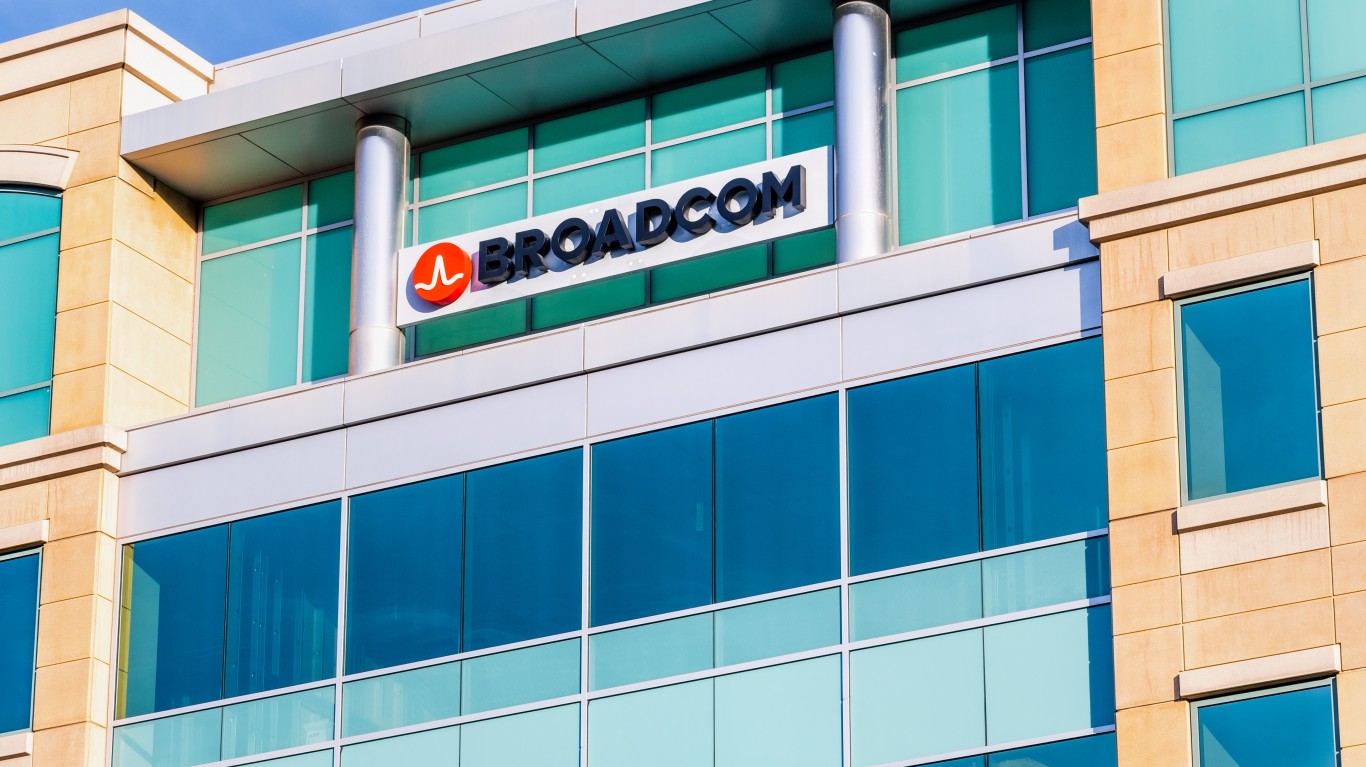Technology
NVIDIA vs. Broadcom: Stock Split Rivals Battling for the Future of AI

Published:

Both NVIDIA (Nasdaq: NVDA) and Broadcom (Nasdaq: AVGO) recently took turns laying out their vision for the future of AI. NVIDIA hosted its GTC event where it unveiled its newest B200 chip that will quickly collect tens of billions in revenue while Broadcom hosted its “Enabling AI Infrastructure” event.
Watching these two events, I was struck by how the battle lines are being drawn for the future of AI. On one side stands NVIDIA with an Apple-like approach to AI while Broadcom wants to lead a world where AI data centers look like the Windows ecosystem of the 1990s. Let’s dive into what’s at stake and the differences between the AI futures laid out by both companies.

When I talk to investors about NVIDIA, I’m struck by how often they’re interested in when the company will issue a stock split. I’ve covered the subject several times, and believe a stock split is likely to happen at NVIDIA’s Annual Meeting of Stockholders, which will likely take place in June.
However, it’s worth noting that Broadcom is another technology stock that sits at a price where a stock split could happen soon. The company trades for $1,325.41 per share. This is important to note because both NVIDIA and Broadcom are in a position to split because they’ve performed so well recently.
In the past 12 months, Broadcom is up 107% while NVIDIA is up 225%. Slide the timeframe back five years and NVIDIA has seen its shares rise 1,793% while Broadcom has seen healthy gains of 336%. The big catalyst for both companies across the past year has been their exposure to artificial intelligence, with NVIDIA up more because it’s a much tighter association to the trend and has seen stronger sales and profit growth.
However, if NVIDIA doesn’t continue surpassing expectations in the years to come, it will likely be Broadcom’s gain.

Investors often cite NVIDIA’s CUDA as their primary advantage – or “moat” – defending their leading position in AI. CUDA is a software platform that NVIDIA built to spur the growth of GPUs from more niche applications to video games to being used across industries like healthcare and robotics.
And to be sure, CUDA has been an incredible success and is a huge part of NVIDIA’s current near-monopoly in AI workloads. Yet, as AI use cases move from something NVIDIA had to sell the world adopting to being blindingly obvious today, things like building software libraries that get new industries to adopt GPUs become less of an advantage.
Instead, NVIDIA’s strategy of building a vertically integrated networking stack is quickly becoming their greatest moat. NVIDIA has long been expanding beyond GPUs. In 2019 it bought Mellanox, a high-end networking specialist suited to AI data centers. NVIDIA bought Mellanox for $6.9 billion, and last quarter its networking unit exceeded a $10 billion run rate with blistering growth. NVIDIA buying Mellanox may be the greatest tech acquisition of the past five years.
NVIDIA also tried to buy ARM for control of the CPUs in its integrated “superchips” like its recently announced Grace. Regulators blocked that acquisition, but it shows the commitment NVIDIA has to vertical integration.
The closest comparison to what NVIDIA is planning around AI data centers is what Apple has done to consumer-facing technology. It’s a bit ironic there is so much bad blood between these two companies as their business strategy is very similar.

While NVIDIA tries building out its “moat” for the age of AI data centers through vertical integration, Broadcom is pitching the opposite path.
The biggest threat to NVIDIA is that hyerscalers like Meta, Microsoft, Google, and Amazon are its largest customers. These companies all live with buying up tens of billions worth of NVIDIA chips today because AI is currently an arm’s race where you can’t fall behind and NVIDIA is the company at the leading edge of innovation.
However, each would love to reduce their reliance on NVIDIA and break up their near-monopoly on AI accelerator chips.
The main AI revenue source Broadcom offers is their custom accelerator chips – or XPUs – that are an alternative to relying on NVIDIA. The company has two major custom chip customers (likely Google and Microsoft or Meta) and just announced a third (speculated to be ByteDance). To get a sense of the growth in this market, we could look at a quote from the company’s recent event:
“If we go back to 2 years ago, a cluster that was state-of-the-art at the time had 4,096 XPUs … In 2023, we actually built a cluster that is over 10,000 nodes of XPUs and it requires 2 layers of Tomahawk or Jericho switches. And this is the lowest power XPU in the industry today, less than 600 watts and using the latest technology. Now as you go towards 2024, we are going to extend this to over 30,000 and the objective of many of these consumer AI customers is how do we take this to 1 million.“
That last part is what’s most important. Designing a custom chip isn’t cost-effective unless customers reach a significant scale. However, we’re now seeing AI compute clusters going from 4,000 accelerators to potentially one million in just a few short years!
This goal of 1 million connected accelerators isn’t just a single company either. Days after Broadcom issued this quote, The Information revealed Microsoft and OpenAI are working on a ‘Project Stargate’ project that could see the construction of a $100 billion data center for AI.
If your eyes haven’t been opened to how serious the biggest tech companies are willing to spend in AI, this data center would be 100 times more costly than some of today’s biggest data centers. It’s an absolutely massive undertaking and one which companies like Meta, Google, and Amazon will be forced to keep up with.
Beyond designing custom chips for the biggest tech companies, Broadcom offers an alternative to NVIDIA’s networking gear as well. It’s likely they’ll win significant networking revenue selling switches and interconnects. It’s worth noting that as the revenue opportunity in AI data centers explodes, Broadcom has been significantly increasing the pace of innovation in networking components.
Yet, by working with Broadcom large customers can decide which companies to rely on in parts of their data center and which they can design themselves. It’s a very different world than one where they’re relying on a platform of vertically integrated NVIDIA technology.
While most investors focus on NVIDIA vs. AMD as an alternative, I believe the battle between NVIDIA and Broadcom is the actual battle to watch. It’s too early to say whether NVIDIA can hold onto its near-monopoly level in AI workloads. Still, there’s little question that the largest customers of its chips are extremely motivated to find an alternative.
My personal investing strategy is to own both of these companies. NVIDIA is richly priced today, but if AGI happens before the end of the decade its upside could be beyond any forecasts you see today. In addition, the company’s vision to strengthen its moat into vertically integrated solutions beyond CUDA is more forward-thinking than most investors realize.
Broadcom offers a slightly different profile. The company currently collects ~19% of its revenue from AI (a far lower total than NVIDIA), but it also likely doesn’t have the same downside. In addition, it relentlessly returns capital to shareholders through dividends and share buybacks.
Like how AMD and NVIDIA are the two highest-performing S&P 500 stocks in recent years because the end market for their products is so attractive, it’s a strong possibility both Broadcom and NVIDIA offer compelling returns if AI advances continue at their current trajectory.
Thank you for reading! Have some feedback for us?
Contact the 24/7 Wall St. editorial team.